Heroes
Pakistan Air Force1965 SHUHUDA
PAF Heroes form a galaxy of dedicated men who have expanded their lives in the service of Pakistan Air Force, each leaving behind the best of himself, and adding yet another measure to the courage and honor poured into its foundations by those before him; that endless cavalcade of men who look back with swelling pride and say, ‘ I was in the Pakistan Air Force.’
SQUADRON LEADER
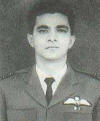
Alauddin Ahmed - Sitara-i-Jurrat
Squadron Leader Alauddin Ahmed, led his squadron in twenty combat missions against the Indian ground and air forces. His leadership throughout the operations was cool, courageous and most determined which inspired the greatest confidence amongst pilots of his formations and resulted in destruction of many Indian tanks and vehicles. In his last sortie, he attacked and blew up an important ammunition train at Gurdaspur rail-head in complete disregard to his personal safety. During this attack on September 13, his aircraft was damaged and was reported missing over enemy territory. Subsequently, it was confirmed that the officer died in this action. For his exemplary leadership, courage and valour, Squadron Leader Alauddin Ahmed was awarded Sitara-i-Juraat.
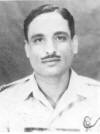
M A Qureshi
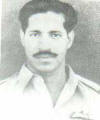
M S A Siddiqui
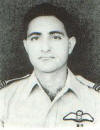
Muhammad Iqbal - Sitara-i-Jurrat
Squadron Leader Muhammad Iqbal flew many operational missions which played a vital part in the success of the Pakistan Air Force during the India-Pakistan war. He carried out these missions with determination, enthusiasm, outstanding ability and at great personal risk. His performance, throughout, was exemplary and highly inspiring for the personnel under his command. For his outstanding leadership, valour, loyalty and invaluable services to the Pakistan Air Force and the country, he was awarded Sitara-i-Juraat.
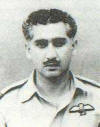
Munir Ahmed - Sitara-i-Jurrat
During the war a high-powered heavily defended radar station near Amritsar was attacked repeatedly by PAF fighters. In all these missions, Squadron Leader Munir unhesitantly volunteered to fly without regard for his personal safety, exposed himself to intense ack ack fire for long periods in attempts to locate and destroy the target. In the final successful attack on September 11, he made the supreme sacrifice when his aircraft was hit. Before his last sortie, Munir flew eight combat missions and shot down an IAF Gnat on September 10. For displaying courage and determination in the face of heavy odds and beyond the call of duty, Squadron Leader Munir-ud-Din Ahmed was awarded Sitara-i-Juraat.
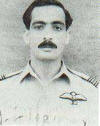
Sarfraz Ahmed Rafiqui - Hilal-i-Jurrat
On 6th September, 1965, Squadron Leader Sarfaraz Ahmed Rafiqui led a formation of three F-86 aircraft on a strike against Halwara airfield. Soon after crossing the Indian border Squadron Leader Rafiqui had been warned about a large number of enemy interceptors being in the air by the leader of a returning F-86 formation. He, however, continued his mission single-mindedly. On the way back, the formation was intercepted by about ten Hunter aircraft out of which Squadron Leader Rafiqui accounted for one in the first few seconds. After Squadron Leader Rafiqui shot down one Hunter aircraft, his guns jammed due to a defect and stopped firing upon which he refused to leave the battle area as he would have been perfectly justified to do; he, instead ordered his No. 2 to take over as leader and continue the engagement with the enemy. He himself now took up a defensive position in the formation in an attempt to give it as much protection as was possible by continuing fighting maneuvers in unarmed aircraft whilst the remainder proceeded to give battle to the enemy. This called for a quality of courage and dedication on the part of Squadron Leader Rafiqui equal to the best in the history of air-fighting. The end for him was never in doubt. He chose to disregard it and in the process, his aircraft was shot down and he was killed but not without his action enabling his formation to shoot down three more Hunter aircraft. Squadron Leader Rafiqui thus provided exemplary leadership in battle and displayed outstanding courage in the face of exceptionally strong opposition. His inspiring leadership and selfless example significantly affected the subsequent course of the air war in which the P.A.F. never failed to dictate terms to an overwhelmingly larger and better equipped enemy. Squadron Leader Rafiqui’s conduct was clearly beyond the call of duty and conformed to the highest tradition of leadership and bravery in battle against overwhelming odds. For this and his earlier exploits, he is posthumously awarded Hilal-i-Juraat.
FLIGHT LIEUTENANT
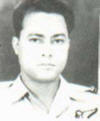
A S Khalid
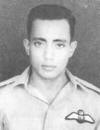
A T M Aziz
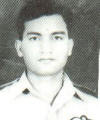
M A Butt
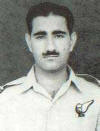
Saifullah Khan - Sitara-i-Juraat
Flight Lieutenant Saifullah Khan Lodhi was a navigator of exceptional ability and a completely dedicated officer. He possessed unusual skill, enthusiasm and drive, which enabled him to make a valuable contribution towards operations. He undertook several operational missions most cheerfully and enthusiastically, invariably attaining outstanding results. It was on one such mission on 11 September 65, that he lost his life. For his extreme dedication to duty, Flight Lieutenant Saifullah Khan Lodhi was awarded Sitara-i-Juraat.
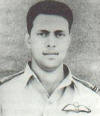
Younus Hussain - Sitara-i-Juraat
Flight Lieutenant Younus Hussain fought in air battles aggressively, fearlessly and with great professional skill. During one such engagement, he fought singly against six enemy aircraft and shot down two Hunters. Though his own aircraft was damaged in this encounter, he managed to bring it back to base safely. On 6 September, while attacking Halwara airfield, his small formation was intercepted by a large number of enemy and, although his aircraft was hit, he refused to break off the engagement, in complete disregard of personal safety, and was reported missing from this mission. He became a symbol of courage and professional ability for other pilots. For his , valour, professional skill and devotion to duty he was awarded Sitara-i-Juraat.
FLYING OFFICER
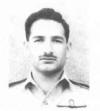
M A Khan
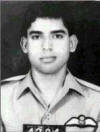
S S Azam
LEADING AIRCRAFT MEN
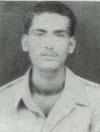
Anwar Hussain Khan - Tumgha-i-Juraat
Leading Aircraftman Anwar Hussain was on duty at a vital point. His position was rocketed by enemy aircraft and the place caught fire. Anwar Hussain was the only person on duty over there. He fought the fire single-handedly with the available fire appliances and managed to control it and thus saved expensive equipment. His death is an example of courage and unfaltering devotion to duty towards the service as well as to the country. He was awarded Tumgha-i-Juraat.
1965 GALLANTRY AWARDS
By inflicting heavy losses on the IAF, the PAF saved Pakistan from the deeper and more sinister motives of the enemy.In both the wars, the gallant air warriors served as a deterrent to the enemy designs, against heavy odds. Their mettle was tested and they always came out with flying colours. PAF personnel are always regarded as the fine breed of brave men who have vowed to keep the pure skies of Pakistan clear from predatory forces.
AIR MARSHAL
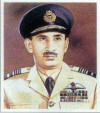
M. Nur Khan - Hilal-i-Juraat
Air Marshal M Nur Khan assumed command of Pakistan Air Force in July 1965. During 1965 war he set a personal example by flying several operational missions that kept the morale of his officers and men at an exceptionally higher level. His inspiring leadership and selfless devotion to duty significantly affected the course of air war in which the PAF managed to dictate terms to an overwhelmingly larger and better equipped enemy. For his valour, courage and distinguished leadership during 1965 war, he was conferred upon the gallantry award of Hilal-e-Juraat.
GROUP CAPTAIN
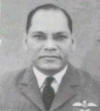
Eric Gordon Hal - Sitara-i-Juraat
Group Captain Eric Gordon Hall in his capacity as Station Commander, Chaklala, played a very vital role during the war with India. All operations were conducted very successfully under exemplary guidance and inspiring leadership of Group Captain Eric Gordon Hall. No task was too hazardous for him. To set an example, he personally flew and led several operational missions that kept the morale of his officers and men at an exceptionally high level. For his courage and example beyond the call of duty, Group Captain Eric Gordan Hall was awarded Sitara-i-Juraat.
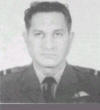
Mohammad Zafar Masud - Hilal-i-Juraat
As Commanding Officer of the most important operational station of the Pakistan Air Force, Group Captain Mohammad Zafar Masud showed great qualities of leadership, devotion to duty and organizing ability in the conduct of air operations against the enemy. On the day and night of 7th September, 1965 in particular, when the enemy made five successive attacks on our air fields and thier installations with Canberra bombers, Hunter and Mystery fighter bombers, the cool courage and determination with which the whole station faced the attacks and heavy damage inflicted by its fighters on the enemy aircraft, clearly indicated the high morale and professional efficiency achieved by the station personnel under the command of Group Captain Masud. For his contribution to the success of the Pakistan Air Force operation against the enemy during of the war, Group Captain Mohammad Zafar Masud was awarded Hilal-i-Juraat.
WING COMMANDER
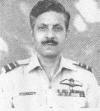
Ayaz Ahmed Khan - Sitara-i-Basalat
Wing Commander Ayaz Ahmed Khan displayed great perseverance, drive and initiative in molding a vital element of Air Defence Organization into a competent and efficient organization. The results of his efforts were so clearly evident in War as this Organization played the most significant part in the air defence of Pakistan. Not content with supervising this vital task, the officer asked to be allowed to carry out offensive missions in bombers and flew several such missions at night against the enemy . For his leadership and devotion to duty and display of great courage, He was awarded Sitara-i-Basalat.
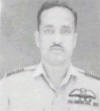
Mohammad Ghulam Tawab - Sitara-i-Juraat
Wing Commander Mohammad Ghulam Tawab started taking part in operations from the very first day the hostilities began. He provided top cover for the first strike against Pathankot. During the War, he flew sixteen air defence missions and eight close support sorties. He took part in bombing of the Srinagar airfield and Jammu radar. He was responsible for destruction of ten enemy tanks and twenty vehicles. Such active participation in operations set an excellent example for all the fighter pilots at Peshawar. Wing Commander Mohammad Ghulam Tawab was, therefore, awarded Sitara-i-Juraat.
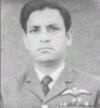
M Anwar Shamim - Sitara-i-Juraat
Wing Commander Muhammad Anwar Shamim in his capacity as Officer Commanding, fighter-bombers wing, made significant contribution to the high morale and aggressive attitude of the pilots who flew from this station. He efficiently managed the changing air defence and other requirements and ensured, while fully meeting these requirements, that the pilots got sufficient rest and other comforts to enable them to fly intelligently and confidently. During the operation, he led 14 air defence/escort missions and 5 ground attack missions. His leadership during these operational missions was aggressive and confident and served as a very good example for his pilots to follow . He accepted long hours of duty, including operational sorties at odd hours of the day, with enthusiasm. Wing Commander Muhammad Anwar Shamim was, therefore, awarded Sitara-i-Juraat.
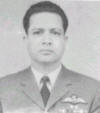
Masood Ahmed Sikandar - Sitara-i-Juraat
Wing Commander Masood Ahmed Sikander, in the capacity as Wing Leader, proved to be an excellent operational commander. He flew with zeal and enthusiasm and completed seventeen close support sorties and three air defence missions during these operations. Whilst attacking enemy armor, he was wounded when his aircraft was hit by ground fire. For his valour, courage and excellent leadership Wing Commander Masood Ahmed Sikander was awarded Sitara-i-Juraat.
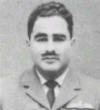
Nazir Latif Sitara-i-Juraat
During the nights of 6th, 7th and 8th September, 1965, Wing Commander Nazir Latif led a flight of bombers on high and low level bombing of enemy airfields. Against intense enemy anti-aircraft fire and fighter opposition, he pressed home his attacks with great determination, courage and a high degree of accuracy. On two occasions, his aircraft was hit by anti aircraft guns but he flew back his aircraft and led the flights back to the base. For exceptional flying skill and valour displayed by him in the bombing operations against the enemy, the officer was awarded Sitara-i-Juraat.
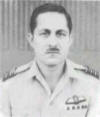
Salahuddin Zahid Butt - Sitara-i-Juraat
Wing Commander Salahuddin Zahid Butt is an exceptional transport pilot who applied his ability to the fullest limits in carrying out operational missions against the enemy. He flew a total of 8 sorties which included supply dropping and Para trooping over enemy territory. The hazardous operations were carried out with great skills and determination. Throughout the period of operations, he was a source of inspiration to all the other aircrew of the Wing. The success of all transport operations and its impact on the enemy reflected great credit to the ability and leadership of this officer. In recognition of his personal example, achievements and his contribution to the overall success of all transport operations, the officer was awarded Sitara-i-Juraat.
SQUADRON LEADER
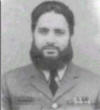
Abdul A K Raja - Tamgha-i-Basalat
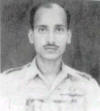
A. Ghaffar Mahmood - Tamgha-i-Basalat
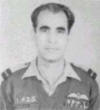
Abdul Masood Khan - Sitara-i-Juraat
Squadron Leader Abdul Masood Khan flew many special missions in a transport aircraft over an important enemy airfield where he dropped paratroops. He succeeded in penetrating the enemy’s concentrated radar defence to accomplish the mission. In doing so, he displayed great skill, determination, professional ability and courage. Squadron Leader Abdul Masood Khan was, therefore, awarded Sitara-i-Juraat.
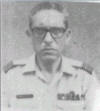
Aurangzeb Malik - Tamgha-i-Basalat
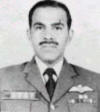
Azim Daudpota - Sitara-i-Juraat
Squadron Leader Azim Daudpota flew 15 strike and 5 Air Defence missions. He controlled and conducted his missions very ably and was always looked up to by his subordinates. He gave precise and clear-cut instructions in the air and was responsible for wrecking many tanks, guns, vehicles, etc, in the face of heavy enemy ground fire. His great moments came on 21st September, 1965, when his formation destroyed many enemy medium guns at Wagha-Attari Sector. For his leadership, devotion to duty and complete disregard for personal safety, Squadron Leader Azim Daudpota was awarded Sitara-i-Juraat.
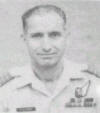
G. M. Khan - Tamgha-i-Basalat
Squadron Leader Ghulam Mohammad Khan has been associated with intelligence work for the last six years. He has worked in various capacities at Inter services Intelligence Directorate as well as Directorate of Air Intelligence, Air Headquarters. For the last two years he is carrying out duties of Assistant Director of Air Intelligence (Operations). In this capacity he was responsible for producing and maintaining upto date record of operational intelligence about the Air Forces of interest to the Pakistan Air Force. Squadron Leader Ghulam Mohammad Khan had applied himself to his duties most enthusiastically and worked with extreme devotion throughout. During the period of emergency he was observed to have totally dedicated himself towards the cause of service and gave his undivided attention not only to his primary duties but also to any other assignments beyond the scope of his duties. Because of his zeal the Directorate was able to produce useful information which helped in accurate and effective delivery of attacks on Indian Air Force targets. Squadron Leader Ghulam Mohammad Khan was the only Air Force Officer who had visited operational areas across the cease fire line to bring the photographs of the Indian Vampires shot down there. He went unarmed by road without any assistance, searched the wreckage and completed his mission in the area which was being continuously shelled by the enemy at great personal risk. For his devotion to duty and courage he was awarded of Tamgha-i-Basalat.
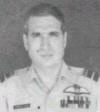
Jamal Ahmed Khan - Sitara-i-Juraat
During the Indo-Pakistan War, Squadron Leader Jamal Ahmed Khan flew 29 Air Defence missions and one Photo Mission. He took part mainly in night operations. He was one of two pilots who were credited with the shooting down of a Canberra aircraft. His contribution to deterring the weight and accuracy of enemy night bomber’s attacks was commendable. He carried out all his missions with aggressiveness. For his exceptional devotion to duty and courage, Squadron Leader Jamal Ahmed Khan was awarded Sitara-i-Juraat.
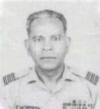
M. E. A. Bhuya - Tamgha-i-Basalat
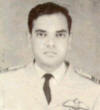
Mir Abdul Rashid - Sitara-i-Juraat
Squadron Leader Mir Abdul Rashid made a valuable contribution to the operational effectiveness of the Pakistan Air Force by carrying out extensive surveillance of radar stations in India and by carrying out aerial photography of vital areas in enemy territory. He always responded most enthusiastically and courageously to all calls made on him in this regard and invariably set an inspiring example for his colleagues. In one particular sortie, after the aircraft was severely disabled, he showed tremendous coolness, courage and piloting skill to bring the aircraft back safely to his base. Squadron Leader Mir Abdul Rashid was, therefore, awarded Sitara-i-Juraat.
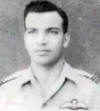
Mervyn Leslie Middlecoat - Sitara-i-Juraat
Squadron Leader Middle coat’s performance during the operations has been outstanding both on the ground and in the air. He worked continuously with no regard to fatigue and much beyond the call of duty. He kept the morale of the Squadron very high and guided his pilots in a highly professional manner. He flew 17 Air Defense Sorties and 3 Photo Sorties over the forward bases. For his leadership and devotion to duty Squadron Leader Mervyn Leslie Middle coat was awarded Sitara-i-Juraat.
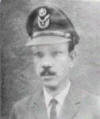
Mohammad Mahmood Alam - Sitara-i-Juraat
On 6th September, 1965, during an aerial combat over enemy territory, Squadron Leader Mohammad Mahmood Alam flying as pilot of an F-86 Sabre Jet, shoot down two enemy Hunter aircraft and damaged three others. For the exceptional flying skill and valor displayed by Squadron Leader Mohammad Mahmood Alam in operations, he was awarded Sitara-i-Juraat. On 7th September, 1965, in a number of interception missions flown by Squadron Leader Mohammad Mahmood Alam against the enemy aircraft attacking Pakistan Air Force Station, Sargodha, Squadron Leader Alam destroyed five more enemy Hunter aircrafts. In less than a minute , which remains a record till today. Overall he had nine kills and two damagers to his credit. For the exceptional flying skill and valour shown by him in pressing home his attacks in aerial combats with the enemy, Squadron Leader Mohammad Mahmood Alam is awarded a bar to his Sitara-i-Juraat.
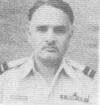
Mian M. Ashfaq - Tamgha-i-Basalat
During the National Emergency , Squadron Leader Main Mohammad Ashfaq was detailed to work as Officer-in-charge servicing party for C-130B aircraft operating away from their home base. During this period , Squadron Leader Main worked selflessly and with complete devotion. He spared on effort in keeping the aircraft fully serviceable and making them available whenever required for the operational missions ,despite inadequate base facilities. On many occasions aircraft modifications were carried out at short notice because of change in role. This would not have been possible without his capacity for round the clock work. His job was further complicated by the fact that the aircraft had to be dispersed at different places and he had to arrange maintenance support at a short notice. By this personal example and devotion to duty, he inspired his men to give their best in this difficult period, he was awarded Tamgha-i-Basalat.
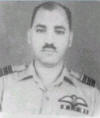
M. Ishaq Baig - Tamgha-i-Basalat
Squadron Leader Mirza Ishaque Beg was in command of care and maintenance party at Lahore from 8th September, 1965 to 23rd September , 1965. During this period he ensured that all arrangements for defence and denial , safe-guarding of petrol, oil and lubricants, Burmah Shell and ESSO Fuel Installations; round the clock working of operation room and Air Raid Warning System for Lahore and different cities of West Pakistan functioned effectively. His arrangement for denying PAF Lahore to enemy clandestine operations like landing of aircraft or pare troop dropping with the meager man-power available was excellent. He evacuated about sixty East Pakistani families to Kohat in an orderly and smooth manner. His cheerfulness and devotion to duty was a great inspiration to all the PAF personnel at Lahore who performed their various duties to the best of their capability. For his inspiring leadership and effective supervision, while under stress, Squadron Leader Mirza Ishaq Beg was awarded of Tamgha-i-Basalat.
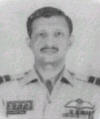
M. Younus - Tamgha-i-Basalat
Squadron Leader Mohammad Yunis took part in T-6G offensive missions behind the enemy lines during the period 6th September, 1965 to 22nd September, 1965. Inspire of the limited capability of this aircraft in the form of performance , navigational capability and weapon system, Squadron Leader Yunis repeatedly pressed home his attack by night on the enemy communications in the face of fire from the ground and successfully damaged two trains and blew up one small ammunition vehicle. This success is attributed to his offensive spirit, and hunting eye which enabled him to spot the enemy movements inspire of black-out and poor light conditions. He awarded Tamgha-i-Basalat.
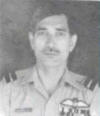
Najeeb Ahmed Khan - Sitara-i-Juraat
Squadron Leader Najeeb Ahmed Khan was commanding a Bomber Squadron during the Indo-Pakistan War. He flew 17 bombing missions against various Indian Air Force operational bases and led his Squadron with courage during the most hazardous raids on Ambala, Adampur, Jamnagar and Jodhpur. He carried out the raid on the well-defended airfield of Ambala deep in enemy territory at great personal risk. The attack was conducted with great accuracy and outstanding professional skills. By his example, he inspired confidence, determination and aggressiveness amongst personnel of his Squadron. For his outstanding courage, inspiring leadership and dedication to duty, he is awarded Sitara-i-Juraat.
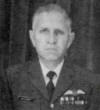
Rais Ahmed Rafi - Sitara-i-Juraat
Squadron Leader Rais Ahmad Rafi flew a total of 14 operational missions during the Indo-Pakistan War. The officer led his Squadron on most of the hazardous missions to Ambala, Adampur, Jamnagar and Jodhpur. He completed all the missions assigned to him in a highly professional manner and in complete disregard of his personal safety. The officer was a source of inspiration for other pilots in the Squadron and has set a fine example of courage, valour and determination. He invariably delivered his attacks with great accuracy and precision causing maximum damage to the enemy. For his courage and gallantry performance, Squadron Leader Rais Ahmed Rafi was awarded Sitara-i-Juraat.
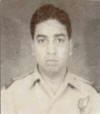
Shuaib Alam Khan - Sitara-i-Juraat
Squadron Leader Shuaib Alam Khan flew fourteen operational missions very successfully. On all these missions, he displayed exceptional professional skill and navigated his aircraft with unerring accuracy to targets both by day and night. The confidence and enthusiasm with which he undertook missions to the most heavily defended targets deep in the enemy territory, set a very high example to all other navigators. Inspiring leadership and professional competence of Squadron Leader Shoaib Alam Khan was in large measures responsible for the highly successful operations of the bombers. His disregard for personal safety and comfort throughout the period of operations was in the highest traditions of the Pakistan Air Force. Squadron Leader Shuaib Alam Khan was, therefore, awarded Sitara-i-Juraat.
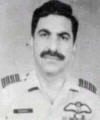
Shabbir Hussain Syed - Sitara-i-Juraat
On 7th September, 1965, Squadron Leader Shabbir Hussain Syed led a flight of F-86 Sabre Jets on two separate strike missions on a well-defended enemy airfield at Kalaikunda. During these strikes, he and his flight destroyed on the ground 10 Canberra Light Bombers and two unidentified enemy aircrafts, and damaged two more. In an aerial combat following the strike, Squadron Leader Shabbir destroyed one enemy Hunter aircraft. For exceptional flying skill and outstanding valour in pressing home the attacks on enemy aircraft, Squadron Leader Shabbir Hussain Syed was awarded Sitara-i-Juraat.
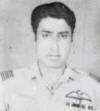
Sayed Sajjad Haider - Sitara-i-Juraat
Squadron Leader Sayed Sajjad Haider displayed exceptional leadership, courage and flying skill in the operations against the enemy during the Indo-Pakistan War. He destroyed with four enemy aircraft, eleven enemy tanks and damaged, three tanks. Throughout the operations, his attitude both on the ground and in the air, was exemplary. He infused his pilots with aggressiveness. The strike mission which he led on 6th September, 1965, against Pathankot airfield, where his formation destroyed 13 enemy aircraft including nine MIG-21’s, was conducted in the best traditions of the Pakistan Air Force. The formation carried out repeated attacks in the face of heavy Ack Ack. For the determination, courage and exceptional flying skill with which he flew and led his Squadron during operations against the enemy, Squadron Leader Sayed Sajjad Haider was awarded Sitara-i-Juraat.
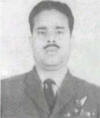
Sultan Muhammad - Tamgha-i-Basalat
Squadron Leader Sultan Muhammad has shown exemplary qualities of leadership and devotion to duty before and during the war with India. As Officer Commanding No.210 Wireless observer Wing, his energy, drive and thorough training specially of Ground Signalers of his wing, resulted in remarkable performance by his units who had been deployed all along the border. Though both the Squadrons in the beginning were without their Squadron Commanders, still the units were able to move to locations along Azad Kashmir territory and soon after re-deployed in their war time locations. The creditable performance and excellent reporting by most of his units, and the excellent discipline and devotion to duty by his units who were all in an area where there was heavy enemy air patrolling, air attacks as well as ground shelling is to a large extent due to his close supervision and untiring efforts before and during the war. In the Kasur Sector while moving on supervisory duties, on two occasions enemy aircraft buzzed his jeep but he kept on traveling undeterred. His efforts also enabled the charging sets repair and supply arrangement to be streamlined to an extent that a daily production of two to three charging sets became possible by the end of the conflict. For his hard work, drive and ceaseless efforts to keep the performance of his units in top state, he was awarded Tamgha-i-Basalat.
FLIGHT LIEUTENANT
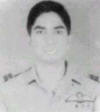
Aftab A Khan - Tamgha-i-Basalat
Flight Lieutenant Aftab Alam Khan flew a total of 23 missions in the F-104 during the period of operations. Throughout this period he showed great enthusiasm for undertaking day and night interception missions as well as visual reccee missions. Apart from his overall aggressive flying he also destroyed one Mystere. Therefore he was awarded Tamgha-i-Basalat.
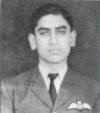
Arshad Sami Khan - Sitara-i-Juraat
Flight Lieutenant Arshad Sami Khan flew the maximum combat missions during the war with India. His enthusiasm and aggressive spirit was of the highest order and was responsible to ignite the spirit of competition amongst other pilots in its most effective form. He led formations in the battle area with exemplary determination and brought back excellent results. He has been credited with one aircraft,15 tanks and 22 vehicles destroyed and 8 tanks and 19 vehicles damaged and 2 heavy guns destroyed. He never looked tired or apprehensive in the face of heavy odds but kept on inflicting maximum damage to the enemy as his only objective. For his outstanding devotion to duty and bravery, Flight Lieutenant Arshad Sami Khan was awarded Sitara-i-Juraat.
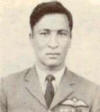
Amanuallah Khan - Sitara-i-Juraat
Flight Lieutenant Amanullah Khan carried out 26 strike missions and one Air Defence mission against the enemy. He flew in a most aggressive and alert manner and was responsible for inspiring great confidence in his formation members. His leadership left nothing more to be desired. He participated in attacks on Amritsar and Ferozpur Radar, Gurdaspur Railway Station, Ammunition Train at Dhariwal and many other close support missions and invariably achieved most convincing results against heavy, enemy ground fire. On 21st September 1965, his formation achieved great successes in the destruction of enemy’s heavy guns which were shelling Lahore. For his aggressive, and determined leadership and display of unbeatable courage in the face of heavy enemy ground fire, Flight Lieutenant Amanullah Khan was awarded Sitara-i-Juraat.
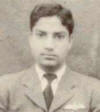
Amjad Hussain Khan - Sitara-i-Juraat
On the morning of September 7, Flight Lieutenant Amjad Hussain Khan engaged two Mysteres at low level, attacking Sargodha airfield. He fired at one aircraft but as his target was flying at a very low altitude it was ineffective. The two aircraft detected him and took evasive action. Flight Lieutenant Amjad Hussain Khan out maneuvered the Indian pilots and destroyed both aircraft. The second, aircraft blew up in the air and the debris struck his aircraft and froze its flight controls. Flight Lieutenant Amjad Hussain Khan ejected at 50 feet above ground level. This narrow escape from death had no ill effects on the pilot and within a day he was available and more than willing to continue his duties. For his dedication to duty and courage, Flight Lieutenant Amjad Hussain Khan was awarded Sitara-i-Juraat.
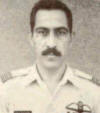
Cecil Chaudhry - Sitara-i-Juraat
On 6th September, 1965, Flight Lieutenant Cecil Chaudhry was No. 2 in a flight of 3 F-86 aircraft led by Squadron Leader Rafiqui. Their target was Halwara airfield of the Indian Air Force. This formation of 3 F-86s was intercepted by 10 Hunter aircraft of the Indian Air Force. During the engagement, the leader’s guns stopped firing and he handed over the lead to Flight Lieutenant Cecil Chaudhry, who very ably and aggressively continued the fight against heavy odds. About 60 miles inside enemy territory, he destroyed two enemy Hunter aircraft with his gun attack. His courage and professional ability in such adverse circumstances was outstanding and he successfully managed to return to base after having lost contact with other members of the formation. On 15th September, 1965, in spite of insufficient information from Ground Radar, Flight Lieutenant Cecil Chaudhry pursued his attack aggressively on enemy bombers and chased them 150 miles from his base. During the engagement, he destroyed one enemy Canberra bomber. The services rendered by him were beyond the call of normal duty and contributed a significant share towards Pakistan Air Force achieving air superiority. For these acts of courage, dedication and professional ability, Flight Lieutenant Cecil Chaudhry was awarded Sitara-i-Juraat.
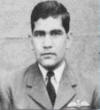
Dilawar Hussain - Sitara-i-Juraat
Flight Lieutenant Dilawar Hussain was one of the greatest sources of inspiration for his Squadron mates throughout the operation. He displayed great keenness to operate in the battle area and great commitment and determination in the face of heavy odds was most inspiring. He flew at all times in a manner that befits the best of the fighter pilots of the Pakistan Air Force. His personal score of enemy tanks and aircraft on the ground was three aircraft and eight tanks destroyed, one aircraft and four tanks damaged, one armored vehicle and thirteen others destroyed, nine vehicles and one gun damaged. He flew a total of ten Air Defence sorties and 17 Strike/Close support missions. On one occasion, he continued his mission without being in the least bit apprehensive after having been hit by ground fire. For his courage and high spirits in the performance of his duty, Flight Lieutenant Dilawar Hussain is awarded Sitara-i-Juraat.
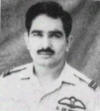
Ghani Akbar - Sitara-i-Juraat
Flight Lieutenant Ghani Akbar flew 13 ground attack and 12 air defence missions during the Indo-Pakistan War. He destroyed one aircraft in a ground strike mission and was credited with 5 tanks destroyed and 5 damaged during close support missions. Throughout he flew aggressively, fearlessly and in a most professional manner. For his flying ability, determination and courage he was awarded Sitara-i-Juraat.
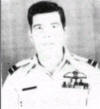
Hakimullah - Tamgha-i-Basalat
Flight Lieutenant Hakeemullah was a pilot flying the star fighters (F- 104), he showed exceptional skill and enthusiasm in the deterring the enemy from achieving its aims. In one of his missions, he forced an enemy Gnat to force-land his aircraft in Pakistan territory.
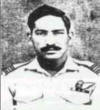
Iftikhar Ahmad Khan Ghauri - Sitara-i-Juraat
Flight Lieutenant Iftikhar Ahmad Khan Ghauri in the Indo-Pakistan War flew a total of 13 operational missions to Pathankot, Adampur, Halwara, Jodhpur and Jamnagar. The officer displayed great courage and determination in reaching his targets in spite of very heavy odds and against tough enemy opposition. His accurate and aggressive mission-planning has contributed significantly towards the success of our bomber raids against the enemy airfields. In all these missions he displayed great, courage , determination and complete devotion to duty. In spite of his serious stomach ailment, the officer remained fit throughout the period of operations and voluntarily offered his services for every mission much beyond the call of duty. For his outstanding devotion to duty, courage and velour, Flight Lieutenant Iftikhar Ahmad Khan Ghauri was awarded Sitara-i-Juraat.
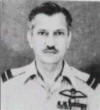
Imtiaz Ahmad Bhatti - Sitara-i-Juraat
Flight Lieuteanat Imtiaz Ahmad Bhatti was one of the two pilots who were on an air patrol when they were directed to intercept enemy aircraft attacking our ground forces in Chamb area. This was the first air encounter of the Indo-Pakistan War. Though heavily out-numbered, Flight Lieutenant Bhatti fought with exceptional courage and professional skill and shot down two Vampire aircraft in this engagement. This set an inspiring example for others to emulate. For his gallantry, determination and dedication to the Service he was awarded Sitara-i-Juraat.
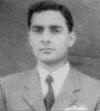
Javed A Khawaja - Tamgha-i-Basalat
Flight Lieutenant Javed Ahmed Khawaja was a pilot in the T-6G Squadron during the period of war in September , 1965. During this period his only concern was to hit and destroy the enemy; and he showed complete disregard for his own safety. On 11th September,1965,while flying over enemy territory ,he was hit by small arm fire from the ground. But his eagerness to hunt for the enemy was so high that he yet pressed his attack on an enemy communication centre and completed his mission. For his offensive spirit, courage and desire to destroy the enemy he recommended for the award of Tamgha-i-Basalat.
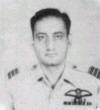
Khawaja A Ahmad - Tamgha-i-Basalat
Flight Lientenant Khawaja Altaf Ahmed as Flight Commander of the photo Reece Squadron flew 10 operational Photo missions covering vital enemy targets with determination and cool courage. He pressed home his missions with success even when exposed to serious danger from enemy aircraft of better performance. Subsequently too he has flown courageously over the battle zone on several hazardous sorties, For his courage and devotion to duty he recommended for the award of Tamgha-i-Basalat.
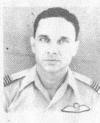
Muhammad Ahmed Khan - Sitara-i-Basalat
During the period of operations against India, Flt.Lt. Muhammad Ahmed Khan flew 47 sorties evacuating casualties from the forward areas and airlifting arms and ammunition for the troops in the front line. By doing so, Flt. Lt. Muhammad Ahmed Khan displayed a keen sense of duty and considerable enthusiasm in making his contribution to the war effort. He was, therefore, awarded Sitara-i-Basalat. During the war, he displayed outstanding qualities of courage and keenness to undertake the most arduous missions from the very onset of operations. This was a source of inspiration to others since he was one of the youngest crew members in the bomber organization. On the first day of the operations, when only experienced aircrew were being selected for the first strikes, Zulfiqar insisted on being included. He was eventually detailed for a mission to Jodhpur which was very successful. For his determination, courage and tenacity, he was awarded the Sitara-i-Basalat.
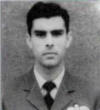
M. Arif Iqbal - Tamgha-i-Basalat
Flight Lieutenant Mohammad Arif Iqbal has been the Flight Commander in No.9 Squadron since 14th June, 1962. He has shown great keenness in all spheres of Squadron training .During the National Emergency of September, 1965 Flight Lieutenant Mohammad Arif Iqbal displayed a tenacity of mind and spirit that was an inspiration to the other pilots of the Squadrons. He worked hours that should have normally exhausted him, but his cheerful spirit and loyalty turned him into a pillar of strength. He was ever willing to fly and did so whatever he was required to do so, therefore he recommended for the award of Tamgha-i-Basalat.

M. Afzal Chaudhry - Tamgha-i-Basalat
Flight Lieutenant Mohammad Afzal Choudhary has performed his duties extremely well during the period of Indo-Pakistan war .He always worked willingly and cheerfully even beyond the call of his duties. He flew all types of mission with great enthusiasm and helped keeping the morale of his subordinates high. Therefore he recommended for the award of Tamgh-i-i Basalat.
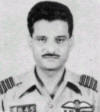
Mohammad Akbar - Sitara-i-Juraat
Flight Lieutenant Mohammad Akbar was responsible for programming of pilots for various duties. He was under extreme pressure of work but was able to exercise complete control over the Squadron and attached pilots and ensured adequate rest for everybody. In addition, he flew as much as was possible and completed every mission in highly professional manner. His personal conduct was a true reflection of his determined efforts. He flew 13 strike and 10 air defense missions. During the strike missions he was credited with two aircraft destroyed, one aircraft damaged on the ground, two tanks destroyed and 3 damaged; 5 vehicles destroyed and 3 damaged and 4 guns damaged. Flight Lieutenant Mohammad Akbar was, therefore, awarded Sitara-i-Juraat.
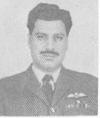
Mohammad Saleem - Sitara-i-Basalat
Flight Lieutenant Mohammad Saleem flew about 15 ground attack missions against the Indian Army and 18 Air Defence sorties. He led a number of missions in an able manner and was responsible for the destruction of many enemy guns, tanks and other valuable military equipment in the face of heavy enemy ground fire. His alertness, courage and aircraft-handling were of a high order and his presence in the formation was a source of inspiration to others. For his devotion to duty, courage and valuable services to the country and Air Force, Flight Lieutenant Mohammad Saleem was awarded Sitara-i-Basalat.
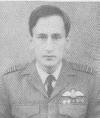
M. Tariq Habib Khan - Sitara-i-Juraat
Flight Lieutenant M.Tariq Habib Khan was one of the pilots who struck the enemy airfield at KalaiKunda in the first strike mission against the enemy from East Pakistan. He flew three operational sorties and many other Air Defence missions and carried out these missions most courageously with success against heavy odds at great risk and in complete disregard for his personal safety. In one of these sorties , he engaged 4 Indian Air Force Hunters thus diverting their attention from other Pakistan Air Force aircraft who were attacking the enemy airfield. Later, he himself managed to evade the Indian Force aircraft and returned to base safely in a crippled aircraft. During all these operations, he destroyed three Canberras and one C-119 on the ground and one Hunter in the air. Flight Lieutenant Tariq carried out all his missions with determination, courage and at great personal risk. For his act of bravery and devotion to duty, Flight Lieutenant Mohammad Tariq Habib Khan was awarded Sitara-i-Juraat.
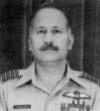
Nazir Ahmed Khan - Sitara-i-Juraat
Flight Lieutenant Nazir Ahmed Khan took an active part in the air operation during the war with India. These operations involved flying over hazardous terrain in adverse weather condition by night as well as flying at extremely low levels. Such operations called for outstanding flying ability and great courage. He carried out these missions with great skill and determination, and his achievements are a tribute to his ability. Flight Lieutenant Nazir Ahmed Khan was, therefore was awarded Sitara-i-Juraat.
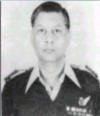
Chaudhry Rizwan Ahmed - Sitara-i-Juraat
Flight Lieutenant Chaudhry Rizwan Ahmed undertook a total of seven operational missions in enemy territory. Apart from his exceptional professional skill as a navigator, he was associated with the planning of all missions undertaken by the Squadron. By his objective thinking and sound ideas on the use of airborne radar equipment, a very high degree of accuracy in aerial delivery missions under blind flying conditions was achieved. In addition to this contribution, he was always available for strenuous flying duties even after long tiring hours of planning, and consistently displayed a great deal of zeal and stamina. His achievements made him stand out as a navigator who combines professional skill with a rare sense of objectivity. Flight Lieutenant Ch. Rizwan Ahmed was, therefore, awarded Sitara-i-Juraat.
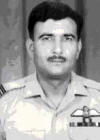
Syed Mohammad Ahmed - Sitara-i-Basalat
Flight Lieutenant Syed Mohammad Ahmed flew a total of 19 ground support operational missions from 6 to 19 September, 1965. On 19 Sep. 65, his aircraft was very badly damaged by the enemy Ack Ack during a raid against a heavily defended enemy target. The pilot displayed extreme coolness, presence of mind and determination and managed to bring the crippled aircraft back to base. His controls unfortunately jammed on the final approach and he was seriously injured. During the entire period of the War, the officer volunteered to fly every operational sortie that was available. His enthusiasm and keenness was a source of inspiration to the officers around him and, considering the fact that he was not employed on full flying duties before the start of the hostilities, his performance throughout had been outstanding and highly commendable. His aggressive manner of attacking enemy targets was most inspiring and contributed significantly towards the destruction of each target that was assigned to his formation. For his outstanding devotion to duty and courage, Flight Lieutenant Syed Mohammad Ahmed was awarded Sitara-i-Basalat.
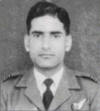
Saadat Mohammad Akhtar Khan - Sitara-i-Juraat
During the Indo-Pakistan War, Flight Lieutenant Saadat Mohammad Akhtar Khan completed a total of 15 operational missions against the enemy airfields. He undertook the most hazardous missions to Ambala, Adampur, Jodhpur, Halwara and Pathankot. In all these missions he displayed great courage and valour, Flight Lieutenant Saadat Mohammad Akhtar Khan was, therefore, awarded Sitara-i-Juraat.
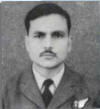
S. Viqar Ahmed Abdi - Sitara-i-Juraat
On 7th September, 1965, Flight Lieutenant Viqar Ahmed Abdi was the navigator on an operational mission flying at low level by night where precise navigation was no easy task. He succeeded in accomplishing the mission with the desired accuracy. In so doing so he, as a navigator, displayed great skill and determination. In addition to this special mission, he undertook many more successful night bombing missions. For his excellent performance, Flight Lieutenant Viqar Ahmed Abdi was awarded Sitara-i-Juraat.
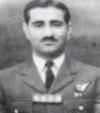
Saifullah Khan Lodhi - Sitara-i-Juraat
Flight Lieutenant Saifullah Khan Lodhi was a navigator of exceptional ability and a completely dedicated officer. He possessed uncommon skill, enthusiasm and drive, which enabled him to make a valuable contribution towards operations. He undertook several operational missions most cheerfully and enthusiastically, invariably attaining outstanding results. It was on one such mission on 11th September, 1965 that he lost his life. For his extreme dedication to duty, Flight Lieutenant Saifullah Khan Lodhi is awarded Sitar-i-Juraat posthumously.
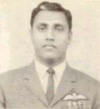
Saif-ul Azam - Sitara-i-Juraat
Flight Lieutenant Saif-ul-Azam flew 12 ground-attack missions against the enemy in Sialkot, Wagha and Kasur Sector. In spite of heavy odd, he proved to be an extremely cool, calculating and aggressive fighter pilot. His spotting of the enemy’s dug-in and well dispersed armor was most commendable and invariably resulted in success of missions. His own attacks were very well executed and were a source of inspiration to other members of the flights. On 19th September, 1965, in spite of bad radio-communication and having been separated from his formation , his qualities of aggressiveness and alertness earned him and Indian Gnat Fighter. For his exceptional flying, courage, alertness and devotion to duty, Flight Lieutenant Saif-ul-Azam is awarded Sitara-i-Juraat.
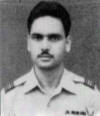
Sajjad A Khan - Tamgha-i-Basalat
Through singleness of purpose and devotion to duty Flght Lieutenant Sajjad Ashraf Khan has contributed a great deal to the efficient performance of Mobile Observer Units of 203 Squadron who were deployed all along the border from chhamb to Lahore. The quality of reporting ,the disciplined re-deployment and immediate functioning of Mobile observer units after they were over run or because of changing front, is a tribute to his inspiring leadership. During the operations this officer was responsible for setting up PAF Lahore Detachment near Sargodha, training of available Ground Signallers on GRC 410 Radifon sets and in setting up of Standing Control Centre from his own resources. Also on many occasions by personally going to 103 Maintenance unit and Central Ordanance Depot Rawalpindi to bring all possible spares of wireless sets as well as charging sets he ensured that rectification and supply of much needed equipment for wireless observer units continued unhampered. For his exemplary hard work and devotion to duty and initiative he awarded the award of Tamgha-i-Basalat.
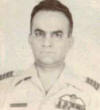
Sikandar Mahmood Khan - Sitara-i-Juraat
Flight Lieutenant Sikandar Mahmood Khan has flown 15 bomber missions during the Indo-Pakistan War. He undertook some of the most hazardous missions and completed every one of them successfully causing maximum damage to the enemy in complete disregard of his own safety. On many occasions, he was chased by enemy fighters and in spite of warnings by own radar controllers, he pressed home his attack and completed the mission most successfully. By this performance he has shown great courage and determination, and his coolness under such difficult circumstances has been of the highest order. For his courage and gallant performance, Flight Lieutenant Sikandar Mahmood Khan is awarded Sitara-i-Juraat.
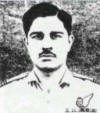
Syed Khalid Hasan Wasti - Sitara-i-Juraat
Flight Lieutenant Syed Khalid Hasan Wasti took part in 5 operational missions during the War with India. These missions were by night into enemy territory. Some of these missions involved flying over mountainous terrain under adverse weather conditions, while the other were flown at 300 feet above ground level. Such operations, therefore, called for skill and courage. He repeatedly pushed himself forward to take part in these difficult missions and always conducted them with great skill and determination. By so doing, he displayed the highest degree of enthusiasm and determination. In addition, his sense of humor and his usual cheerfulness were apparent at all times. For cool courage and devotion to duty, Flight Lieutenant Khalid Hasan Wasti is awarded Sitara-i-Juraat.
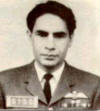
Syed Manzoorul Hasan Hashmi - Sitara-i-Juraat
Flight Lieutenant Syed Manzoorul Hasan Hashmi flew 20 strike and 2 Air Defence missions against the enemy. His strikes were directed against enemy concentrations on Jummu, Sialkot, Wagha-Kasur sectors. He led his mission in a most competent manner and achieved considerable success against heavily defended enemy areas. His own aircraft was hit on six occasions by Ack Ack and small arms fire but, undaunted, he pursued his attacks on the enemy. His formation achieved notable success on 21st September, 1965, in which he destroyed many heavy guns of the enemy which were shelling Lahore and earned him deep appreciation on own army’s Area Commander. His cool, courageous and operational leadership in complete disregard to his own safety in the face of heavy enemy fire and devotion to duty are commendable. Flight Lieutenant Syed Manzoorul Hasan Hashmi is awarded Sitara-i-Juraat.
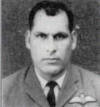
S N A Jilani - Tamgha-i-Basalat
Flight Lieutenant Syed Nazir Ahmed Jilani fle a total of 31 F-86 missions during the period of operations. Of these 30 were Air Defence and one was close support mission. He flew several of these missions asleader and displayed an aggressive and enthusiastic attitude. His personal score was one Gnat destroyed and one hunter “probable”. Therefore he recommended for Tamgha-i-Basalat.
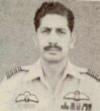
Syed Saad Akhtar Hatmi - Sitara-i-Juraat
Flight Lieutenant Syed Saad Akhtar Hatmi as Flight Commander of a Fighter Squadron, led his formation in 30 Air Defence and 2 Strike missions and is personally credited with the destruction of one enemy Hunter and one Gnat in the air and two Tanks and Four vehicles. The Officer carried out all his missions during the operations with high professional skill, determination, courage and exceptional aggressiveness in the best traditions of the Pakistan Air Force. By his example, he infused his formation with confidence and aggressiveness. For his professional ability, devotion to duty and courage, the officer is awarded Sitara-i-Juraat.
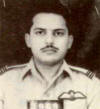
Syed Shamsuddin Khan - Sitara-i-Juraat
Since the commencement of hostilities, Flight Lieutenant Syed Shamsuddin has completed a total of 14 successful bombing missions against enemy airfields at Ambala, Halwara, Adampur, Pathankot, Jamnagar and Jodhpur. Everyone of the attacks undertaken by Flight Lieutenant Shamsuddin was delivered with great accuracy, causing maximum damage to the enemy in spite of very stiff enemy opposition. The officer always volunteered to undertake any mission that was available and the results produced by him have been most satisfying. His coolness under difficult circumstances has been inspiring and he has set an example of great courage, determination and valor for his associates. For his outstanding courage and bravery, Flight Lieutenant Syed Shamsuddin Ahmed is awarded Sitara-i-Juraat.
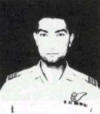
William D Harney - Sitara-i-Juraat
Flight Lieutenant William D. Harney’s performance and professional ability during the current operations has been of the highest order. The officer has, in spite of a hand injury, voluntarily undertaken all available bombing missions and especially the most hazardous ones to Ambala, Pathankot, Adampur, Halwara and Jodhpur. In all the missions he has excelled in qualities of leadership, courage and devotion to duty. His mission planning and execution of the missions has been of the highest order in spite of very heavy odds. He has always reached his targets and made very significant contribution to accurate attacks. The officer has during the Indo-Pakistan War completed a total of 14 operational missions and every one of them has been of significant importance to the overall superiority of the Pakistan Air Force. For his courage dedication to duty, Flight Lieutenant William D. Harney is awarded Sitara-i-Jurat.
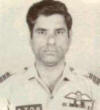
Yousaf Ali Khan - Sitara-i-Juraat
While leading the fighter formation of two aircraft’s over Chamb Sector, Flight Lieutenant Yousaf Ali Khan was attacked by 4 Hunters. During the engagement, when he had got behind the enemy, two more Gnats attacked him. His left elevator was shot away but he continued fighting them till the enemy aircraft broke off. He showed great courage and determination in engaging overwhelming odds and bringing home the damaged aircraft. On 13th September, 1965, he shot down another Gnat. For his consistent determination, courage and aggressiveness, the officer is awarded Sitara-i-Juraat.
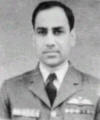
Yousaf Hasan Alvi - Sitara-i-Juraat
In the current operations, Flight Lieutenant Yousaf Hasan Alvi completed a total of 13 missions against Indian Airfields. His professional ability was of the highest order and he has displayed coolness, courage and determination in every one of his attacks which has resulted in the destruction of many Indian installations and airfields. He has conducted bombing attacks on Adampur, Halwara, Pathankot, Jamnagar and Jodhpur with such precise accuracy that he was always selected for the most difficult tasks. He showed determination, courage and singleness of purpose, in execution of every mission he undertook. For his outstanding bravery and devotion to duty, Flight Lieutenant Yousaf Hasan Alvi is awarded Sitara-i-Juraat.
FLYING OFFICER
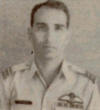
M Ehtisham Akram - Tamgha-i-Basalat
Flying Officer Mohammad Ehtisham Akram is a photo reccee pilot. He has flown four operational missions .On 7th September ,1965, he made two attempts to reach Amritsar but could not penetrate because of enemy fighter aircraft. He pulled back into Pakistan, waited and made a third attempt and completed the task. On 10th September ,1965, even though his F-104 aircraft escort was removed by sector operation Centre, he went ahead and completed the task given to him. During this mission he was attacked by I.A.F Mystere aircraft but successfully evaded the enemy and returned to base. Flying Officer Ehtisham has shown courage and determination to complete the task given to him. Therefore he awarded Tamgha-i-Basalat.
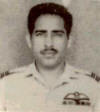
M Masud Akhtar - Tamgha-i-Basalat
Throughout the period of operations Flying Officer Mohammad Masud Akhtar has flown as a wing man most confidently and aggressively. During this short war he has flown nearly 50 hours. He was flying Wing man the day a flight of four hunters were engaged and shot down. He kept his wing leader covered continuously during this engagement. For his experience, he is the best wing man in a wing. So he recommended for the awad of Tamgha-i-Basalat.
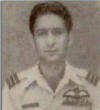
Shafique Haider - Tamgha-i-Basalat
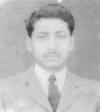
Ziauddin Hasan - Sitara-i-Juraat
On the nights of the 6th ,7th and 8th September, 1965, Flying Officer Ziauddin Hasan flew as navigator of the leading aircraft of bombers which attacked the enemy airfields. Despite intense enemy anti-aircraft fire and some fighter opposition, Flying Officer Hasan navigated the bomber fights with cool, courage and accuracy and thus contributed to the success of bombing mission. For the high degree of professional skill, courage and determination shown by Flying Officer Ziauddin Hasan in the air operations against enemy airfields, he is awarded Sitara-i-Juraat.
CORPORAL
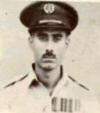
Ghulam Abbas - Tamgha-i-Juraat
Corporal Technician Ghulam Abbas was N.C.O. I/c of a unit during the War. He was ordered to deploy his unit in the Kasur sector. When he reached there, he was advised by the Army personnel that the area was not safe but he told them that this was his place of duty and he would execute the orders given by his superiors. On 10th September, 1965, the enemy artillery shells started falling within about 200 feet of his post but he continued carrying out his job without any fear. His personal example of devotions to duty and courage was a source of inspiration to his fairly inexperienced subordinates and the Unit kept on functioning perfectly. On 11th September, 1965, the shells started falling within a few yards of his post but even this did not deter him from carrying out his duties. He told three of his men to sit in the trench and the remaining two, including himself, kept on manning the observation post and the operator’s seat. Thus, his team continued functioning efficiently in spite of heavy shelling by the enemy.
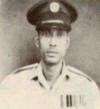
M Omar Ali - Tamgha-i-Juraat
During the War, Corporal Omar Ali was NCO I/C of a unit attached to a forward Brigade. In spite of frequent strafing bombing and shelling by the enemy, Corporal Ali performed his duties most efficiently. His unit was one of the first to report the four enemy Vampire aircraft which were shot down on 1st September, 1965. On 5th September, 1965,his unit was strafed by four enemy Hunters and it was noticed that Cpl. Ali continued to work along with his operator when everyone else had taken cover. He remained unconcerned about his personal safety and went on performing his duties even under enemy fire. His outstanding courage and devotion to duty was a great source of inspiration to his subordinates.
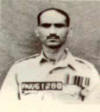
Sher Mohammad - Tamgha-i-Juraat
During the War, Corporal Sher Mohammad was manning a Light Ack. Ack. gun at P.A.F. Station, Sargodha. On 6th September, 1965, while Indian aircraft were strafing and rocketing the base, Corporal Sher Mohammad courageously performed his duty by keeping up an accurate fire against the invaders and damaged one enemy aircraft. This was the first engagement of P.A.F. guns against the enemy and determined fire by Corporal Sher Mohammad greatly enhanced the morale and fighting spirit of the P.A.F. gun-crew.
MASTER AIR CREW
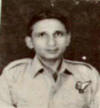
Mohammad Ashfaq - Tamgha-i-Juraat
Master Aircrew Mohammad Ashfaq while performing the duties of an aircrew during the War, undertook the maximum number of missions against the enemy. In addition to flying several missions, he personally supervised the ground handling of the a/c which involved a great deal of time and effort. He most conscientiously devoted himself to the work assigned to him with utmost enthusiasm without any regard for personal comfort or the dangers involved. In spite of long hours of work on the ground as well as in the air, his cheerfulness and willing co-operations was commendable.
AIR CREW I
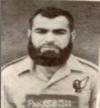
Mohammad Hafeez - Tamgha-i-Juraat
During the War, Aircrew 1 Mohammad Hafeez undertook a large number of missions against the enemy. As an aircrew, he displayed great keenness and extreme dedication to his duties with least regard for his personal comfort or the hazardous nature of these operations. In addition to flying operations, he personally supervised the loading of aircraft before undertaking the missions. In spite of long hours of work on the ground and in the air, he remained cheerful and showed remarkable co-operation at all times.
1971 SHUHUDA
PAF Heroes form a galaxy of dedicated men who have expanded their lives in the service of Pakistan Air Force, each leaving behind the best of himself, and adding yet another measure to the courage and honor poured into its foundations by those before him; that endless cavalcade of men who look back with swelling pride and say, ‘ I was in the Pakistan Air Force.’
PILOT OFFICER
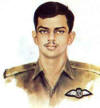
Rashid Minhas - Nishan-i-Haider
On the morning of Friday, 20 August 71, Pilot Officer Rashid Minhas, a pilot still under training, was in the front seat of jet a trainer, taxiing out for take off. An instructor pilot from the same unit forced his way into the rear cockpit, seized control of the aircraft and having taken off, headed the aircraft towards India. With just 40 miles of Pakistan territory remaining, Minhas had only one course open to him to prevent his aircraft from entering India. Without hesitation and living up to the highest traditions of the Pakistan Air Force, Rashid Minhas tried to regain control of his aircraft, but finding this to be impossible in the face of the superior skill and experience of his instructor, forced the aircraft to crash at a point 32 miles from the Indian border. In doing so, Pilot Officer Rashid Minhas deliberately made the supreme sacrifice for the honour of Pakistan and the service to which he belonged. For this act of heroism above and beyond the call of duty, the President of Pakistan awarded Nishan-i-Haider to Pilot Officer Rashid Minhas.
WING COMMANDER
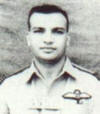
Mervyn L Middlecoat - Sitara-i-Juraat
On the outbreak of war on 3 December 71, Wing Commander Mervyn L Middlecoat was on a training visit abroad. He returned to Pakistan immediately and joined operations with such keen interest that he inspired all the squadron pilots. The day after his arrival he was detailed on a strike mission to the heavily defended Jamnagar airfield. While returning after the successful mission he was engaged by 2 enemy Mig-21s. In the encounter his aircraft was hit by an enemy missile. He was heard to be ejecting in Indian territory and was officially declared missing in action. For his devotion to duty, determination and courage he was awarded a Bar to the Sitara-i-Juraat.
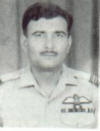
Muhammed Ahmed - Sitara-i-Juraat
On 4 December, 71 one of our combat air patrols over Dhaka was engaged by an enemy formation. With the arrival of more enemy aircraft the patrol was heavily out-numbered and the leader gave a call for help. Wing Commander Muhammad Ahmed was immediately airborne and his timely intervention enabled the patrol to return safely to base. In the encounter Wing Commander Ahmed’s aircraft was hit by an enemy aircraft and he was heard to be ejecting in territory occupied by rebels. For his personal example, courage and devotion to duty, he was awarded the Sitara-i-Juraat.
SQUADRON LEADER
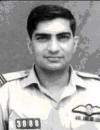
Aslam Choudhry - Sitara-i-Juraat
Squadron Leader Aslam Choudhry flew a total of fifteen missions since the outbreak of war. As he had spent most of his service in training establishments, he had to start with a disadvantage in a fighter squadron. But he was a keen pilot and managed to polish up his fighter flying in a comparatively short time. He was always keen to fly operational missions. On 10 December 71, while flying in leading a section of two F-86s in Chamb Sector on a Close Air Support mission, his flight was engaged by six Hunters. Being heavily out-numbered, he was presumed to have been shot down by the enemy. He was officially declared missing in action. For his valour, courage, determination and devotion to duty, he was awarded Sitara-i-Juraat.
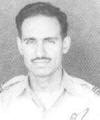
Ghulam Rabbani
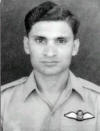
Ishfaq Hameed - Sitara-i-Juraat
Squadron Leader Ishfaq Hameed was recalled from PIA for operational flying, with a B-57 Squadron. From the onset of the hostilities he displayed distinct qualities of patriotism and aggressiveness to achieve positive results. This was a source of inspiration to other aircrew. Unfortunately, he was unable to return from his second mission of the war on 5 December 71. Squadron Leader Ishfaq displayed exceptional determination and tenacity under adverse conditions that existed at his base from 4th morning of December till the night he went for his last mission. For his dedication, courage and display of excellent fighting spirit he was awarded Sitara-i-Juraat.
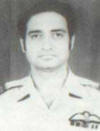
Khusro - Sitara-i-Juraat
Squadron Leader Khusro had retired from the PAF but was recalled for the war. In spite of many personal problems, he showed great keenness, courage, determination and fighting spirit. On 6 December 71, he volunteered for bombing mission to Jamnagar airfield regardless of the consequences. He failed to return from the mission and was officially declared missing in action. His fighting spirit, determination and devotion were an example to all aircrew of the unit. For his outstanding courage and devotion to duty, Squadron Leader Khusro was awarded the Sitara-i-Juraat.
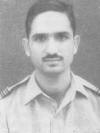
Muhammad Nasir Dar - Sitara-i-Basalat
Squadron Leader Muhammad Nasir Dar, a signals officer, achieved Shahadat as a result of a direct bomb hit on his place of work during war. He continued to work in spite of the heavy air raid and declined to take shelter. For his devotion to his work above and beyond the call of duty, he was awarded the Sitara-i-Basalat.
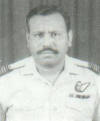
Peter Christie - Sitara-i-Juraat
Squadron Leader Peter Christie was on deputation to PIAC when recalled for war duties. He showed great keenness to fly, and in spite of overwhelming family responsibilities, he was ever willing to take on any mission at any odd hour of the day or night. He was completely devoted to the task in hand. His sense of humor under war conditions, his dedication to the cause of the country and his personal courage contributed immensely to the Squadron’s morale. On 6th December 71, he was detailed as navigator for a bombing mission to Jamnagar. He failed to return from the mission and was officially declared missing in action. For his personal example and complete devotion to duty, he was awarded Sitara-i-Juraat.
FLIGHT LIEUTENANT

A A M Saqlain
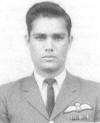
Afzal Jamal Siddiqui - Sitara-i-Basalat
Flight Lieutenant Afzal Jamal Siddiqui displayed outstanding keenness, enthusiasm and aggressiveness during the 1971 war right till the time he was shot down and killed by our own ground fire, while chasing an enemy SU-7 aircraft on 8 December 71. By then he had flown six operational missions. His cheerful, bold and selfless attitude contributed largely to the high morale of his fellow pilots and inspired them to fight the enemy with greater tenacity. For his spirited and aggressive approach towards operational commitments, his sustained display of courage and enthusiasm in the air and on the ground, he was awarded Sitara-i-Basalat.
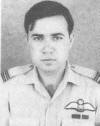
Fazal Elahi - Sitara-i-Juraat
Flight Lieutenant Fazal Elahi was a young and energetic pilot. He flew the first two missions to Srinagar airfield and subsequent Close Air Support missions every day till 7th December 71. On 8th December, his aircraft was hit by ground fire in Chamb-Jaurian sector; the ground fire presumably hit a bomb fuse, causing the aircraft to explode. Flight Lieutenant Fazal always volunteered to fly irrespective of the danger of the mission. He displayed exemplary courage and determination at his young age in spite of limited experience. He was awarded the Sitara-i-Juraat.
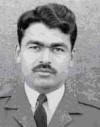
Ghulam Murtaza - Tamgha-i-Juraat
Flight Lieutenant Ghulam Murtaza was an able and experienced navigator. He was a very active member of the squadron and always showed great enthusiasm and determination. He flew two missions against the most heavily defended Indian airfields and showed great bravery and courage in execution of these missions in complete disregard of personal safety. On 5th December 71, he was detailed as navigator on a bombing mission to Amritsar airfield. He failed to return from the mission and was officially declared missing in action. For his courage, determination and devotion to duty, he was awarded the Tamgha-i-Juraat.
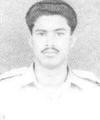
Imdad Hussain
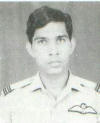
Javed Iqbal - Tamgha-i-Juraat
Flight Lieutenant Javed Iqbal flew two missions against heavily defended Indian airfields. He displayed great courage, enthusiasm and determination. Although he was the junior most pilot in the squadron, he volunteered for these missions in complete disregard for personal safety. His devotion and dedication was a source of pride for all aircrew of his unit. On 5th December 71, he was detailed on a bombing mission to Amritsar airfield. He failed to return from the mission and was officially declared missing in action. For his outstanding courage, determination and devotion to duty, he was awarded the Tamgha-i-Juraat.
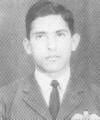
Nayyar Iqbal
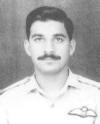
Saeed Afzal Khan - Sitara-i-Juraat
On 4th December 71, Flight Lieutenant Saeed Afzal Khan was flying as No. 2 in a formation of two F-86 aircraft, when he engaged four Indian Hunters and immediately shot one down. Meanwhile another formation of four Hunters joined the aerial battle. in the subsequent combat, although facing great odds, he was not deterred from attacking them. he put up a gallant fight with complete disregard to his own safety. Due to his determination and flying skill, he prevented every one of them from attacking their target i.e. Dhaka airfield. While being heavily outnumbered by superior performance aircraft, he continued the fight but was later shot down by a Hunter. He bailed out safely but was captured by the rebels and has been missing since then. For his courage, determination and devotion to duty, he was awarded the Sitara-i-Juraat.
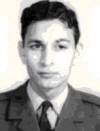
Syed Safi Mustafa - Sitara-i-Juraat
Flight Lieutenant Syed Safi Mustafa was Flight Commander of No. 246 Squadron PAF. Towards the end of February 71, orders were issued for MOUs to regroup and take shelter with the nearest army garrison due to the insecure conditions created by civil agitation. Flight Lieutenant Safi Mustafa along with 37 airmen thereupon took refuge with the East Pakistan Rifles’ Headquarters at Mymensingh. Throughout the period of civil strife and agitation, he continued to look after his men with great courage and dedication. On 16th March he came to Dhaka for a day where he was advised by friends and relatives not to go back to his unit because of the prevailing danger to non locals. He was, however, determined to return to his post and was in contact with the Base till 27th March. The evidence available indicates that in all probability, he was executed by the rebels on 17th April 1971. For his gallantry and dedication, Flight Lieutenant Syed Safi Mustafa was awarded the Sitara-i-Juraat.
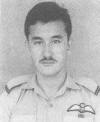
Abdul Samad Changazi - Sitara-i-Juraat
Flight Lieutenant Abdul Samad Changezi flew eleven missions on F-104 during the war. Despite his limited experience, he was very keen and aggressive. He was responsible for the destruction of an enemy radar station and damage to one of their aircraft. In the last mission, disregarding the danger to his life, he pursued his attack on an enemy aircraft till he was shot down by an enemy missile. For his act of valour and for sacrificing his life for the cause of the country, he was awarded the Sitara-i-Juraat.
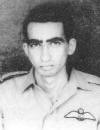
Syed Shahid Raza - Tamgha-i-Juraat
Flight lieutenant Syed Shahid Raza flew a total of eleven operational missions during the war. Throughout the period, the officer displayed an extremely high standard of professional skill, aggressiveness and determination. On 5th December 71, during an aerial engagement, Flight Lieutenant Raza was credited with one enemy Hunter aircraft shot down. On the evening of 17th December, while off duty, he requested to be detailed for a close support mission. His aircraft was hit by enemy ground fire during that mission, and he was heard to be ejecting in enemy territory. He was officially declared missing in action. For his courage, determination and devotion to duty, he was awarded the Tamgha-i-Juraat.
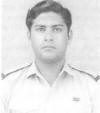
Muhammad Wasim Ansari - Tamgha-i-Basalat
Flight Lieutenant Muhammad Wasim Ansari, a signals officer, achieved Shahadat as a result of direct bomb hit on his place of work. This officer, inspired by a feeling of patriotism, carried on working under extremely dangerous conditions. This was above and beyond the call of duty. He was awarded the Tamgha-i-Basalat.
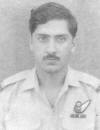
Zulfiqar Ahmed - Sitara-i-Juraat
Flight Lieutenant Zulfiqar Ahmed was employed as a navigator on a B-57 aircraft. Although he could not return from his second mission of the war, he displayed outstanding qualities of courage and keenness to undertake the most arduous missions from the very onset of operations. This was a source of inspiration to others since he was one of the youngest crew members in the bomber organization. On the first day of operations, when only experienced and mature aircrew were being selected for the first strikes, Zulfiqar insisted on being included. He was eventually detailed for a mission to Jodhpur which was very successful. For his determination, courage and tenacity, he was awarded the Sitara-i-Juraat.
FLYING OFFICER
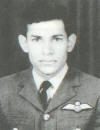
Nasim Nisar Ali Baig - Tamgha-i-Juraat
Flying Officer Nasim Nisar Ali Baig flew a total of eight successful operational missions during the 1971 war. During all those missions he displayed exemplary courage, dedication and professionalism in spite of his limited experience. On 13th December 71, he was ordered to get airborne from a forward base to intercept intruding enemy aircraft. Immediately after take off he was intercepted by three enemy fighters. Placed in a very vulnerable situation, Flying Officer Baig maneuvered his aircraft with determination and aggressiveness but was unable to gain an advantageous position because he was outnumbered during a critical stage of fight. He was subsequently shot down and fatally injured. For his valour, courage and undaunted spirit he was awarded the Tamgha-i-Juraat.
CORPORAL TECHNICIAN
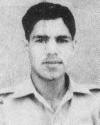
Syed Shaukat Ali - Tamgha-i-Juraat
Corporal Technician Syed Shaukat Ali while a POW in India, conducted himself in an upright and fearless manner. He twice tried to escape from the POW camp. In the second attempt he received serious bullet injuries; even then he pounced upon the armed guard in a bid to prevent him from firing at his colleague Corporal Technician Nawab. For his outstanding and excellent performance, he was awarded the Tamgha-i-Juraat.
JUNIOR TECHNICIAN
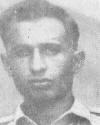
Mohammed Latif - Tamgha-i-Juraat
During an enemy air raid, realizing that the pilots strapped in air defence alert aircraft were exposed to grave danger, Junior Technician Mohammed Latif disregarded his personal safety, ran up to each aircraft and helped the pilots to unstrap and take cover. In this process he was fatally wounded by enemy fire and died soon after. For his outstanding courage and devotion to duty, he was awarded the Tamgha-i-Juraat.
LEADING AIRCRAFT MEN
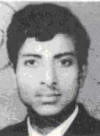
Mohammed Azam Nasir - Tamgha-i-Juraat
During an enemy raid at PAF Chander, instead of taking shelter, Leading Aircraftman Mohammed Azam Nasir proudly faced the Indian bomber with G-3 rifle and kept on firing at the attacking aircraft. A bomb fell about six yards from his trench and buried him alongwith other occupants of the trench. All except he were dug out alive. For his outstanding courage and devotion to duty, he was awarded the Tamgha-i-Juraat.
1971 GALLANTRY AWARDS
By inflicting heavy losses on the IAF, the PAF saved Pakistan from the deeper and more sinister motives of the enemy.In both the wars, the gallant air warriors served as a deterrent to the enemy designs, against heavy odds. Their mettle was tested and they always came out with flying colours. PAF personnel are always regarded as the fine breed of brave men who have vowed to keep the pure skies of Pakistan clear from predatory forces.
AIR MARSHAL
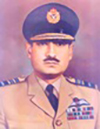
A Rahim Khan - Hilal-i-Juraat
GROUP CAPTAIN
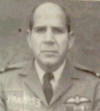
Inam H Khan - Hilal-i-Juraat
WING COMMANDER
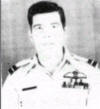
Hakimullah - Sitara-i-Juraat
Wing Commander Hakimullah was commanding a fighter bomber squadron during the Indo-Pakistan War, 1971. He led five strike missions against heavily defended enemy airfields. Every mission, led by him, including the first strike against Amritsar, was flown with tremendous courage and exceptional professional skill. He flew with nerve and cool composure, which was a source of inspiration to his team in particular and everyone else connected with operational activity in general. During some of these strikes his formation was intercepted by enemy fighters over Indian airfields. Wing Commander Hakimullah lived upto the highest traditions of leadership during these critical moments and accomplished the primary mission. Throughout the war, his unit inspired by him, flew boldly and without any losses in aircraft or pilot. For his gallant and professional performance, He has been awarded Sitara-i-Juraat.

M. Afzal Choudhry - Sitara-i-Juraat
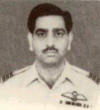
Mahmood Akhtar - Sitara-i-Basalat
Wing Commander Mahmood Akhtar was commanding a B-57 detachment during the war. From the onset of operations his performance was a source of inspiration to all. His personal example and courage under dangerous and trying conditions were never in doubt. Wing Commander Akhtar always went out of his way to fly the most difficult missions and proved time and again that there is no substitute for professionalism and determination. His example, Cheerful attitude and high moral kept the force together even under the most difficult conditions. He has time and again thrown personal safety aside and has launched missions during enemy raids at the Base , when he could easily have aborted them . For his courage , leadership and excellent administration he has been awarded Bar to Sitara-i-Basalat.
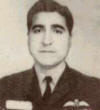
Syed Nisar Yunus - Sitara-i-Basalat
Wing Commander Syed Nasir Yunus was in Dhaka at the time the Army started operation in East Pakistan. He flew many hazardous transport missions for the initial deployment of the army to various places. This included recapture of some of the rebel-held airfields. Many a time, he received anonymous telephone calls to suspend C-130 operations, otherwise he and his crew would be killed. Undeterred by these threats he flew six to eight missions a day. He also flew reccee missions to spot and locate enemy ships that were deployed in the Bay of Bengal. On one mission he was able to locate an element of three enemy ships, which turned to fire on his aircraft, but he was able to evade successfully. During December 1971, Wing Commander Yunus guided and conducted the operations of his squadron most ably. His devotion to duty has been a source of inspiration to all, Wing Commander Yunus has displayed conspicuous courage, determination and has made outstanding contribution to the over-all achievement of the P.A.F. In recognition of his services, Wing Commander Syed Nasir Yunus has been awarded Sitara-i-Basalat.
SQUADRON LEADER
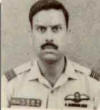
Abdul Basit - Sitara-i-Juraat
Squadron Leader Abdul Basit was detailed on an air mission against the I.A.F. Base at Halwara on the night of 10/11th December, 1971. He flew the mission as planned. While a few minutes short of the target four surface-to-air missiles were fired at his B-57 aircraft. He displayed great courage, skill and devotion to duty, evaded these missiles, continued on his mission and successfully attacked the target even though there was all the likelihood of the enemy firing more SAM’s. For his courage, determination and devotion to duty Squadron Leader Abdul Basit has been awarded Sitara-i-Juraat.
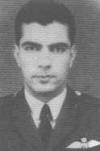
Farooq Omer - Sitara-i-Juraat
Squadron Leader Farooq Omer was employed on day and night air defence and reconnaissance duties during the Indo-Pakistan war of 1971. He flew reconnaissance mission against heavily defended enemy airfields and forward army positions. He always flew with immense courage and determination. On one of the reccee missions, because of a bird hit his aircraft sustained engine damage but he resolutely continued his mission and successfully completed it against a heavily defended enemy airfield. On an air defence mission, Squadron Leader Farooq Omer successfully intercepted an enemy formation of Hunter aircraft and shotdown / damaged four of them. The immense courage and determination displayed by Squadron Leader Farooq Omer during the war was always a source of inspiration to other pilots of squadron. He has been awarded Sitara-i-Juraat.
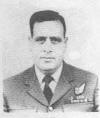
Ghulam Ahmed Khan - Sitara-i-Juraat
Squadron Leader Ghulam Ahmed Khan was detailed along with Squadron Leader A. Basit on a counter air mission against the I.A.F. Base at Halwara on the night of 10/11th December, 1971. He flew the mission as planned. While a few minutes short of the target 4 SAMs were fired at his B-57 aircraft. He displayed great courage, skill and devotion to duty, assisted his pilot in evading these missiles, continuing the mission and successfully attacking the target even though there was all the likelihood of the enemy firing more SAMs. For his courage, determination and devotion to duty Squadron Leader Ghulam Ahmed Khan has been awarded Sitara-i-Juraat.
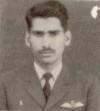
Hassan Akhtar - Sitara-i-Basalat
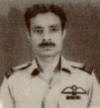
Javed Afzal Ahmed - Sitara-i-Juraat
On 4th December, 1971 while flying on an air defence mission, Squadron Leader Javed Afzal Ahmed intercepted a formation of four Hunters approaching Dhaka airfield. During the combat he shot down two Hunters and chased away the others, thus preventing them from attacking any target. In the same mission, he engaged a formation of two SU-7 aircraft’s which were attacking a Pakistan Army helicopter and chased them away. Throughout the war he fought valiantly. For his courage and excellent performance in the face of heavy odds, Squadron Leader Afzal has been awarded Sitara-i-Juraat.
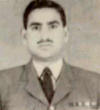
Maqsood Ahmed - Sitara-i-Basalat
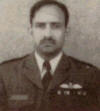
M. R. Akhtar - Sitara-i-Basalat
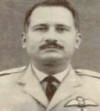
Nazir Ahmed Khan - Sitara-i-Basalat
Squadron Leader Nazir Ahmed Khan, S.J., has consistently displayed outstanding courage, determination and devotion to duty both during peace and war. Squadron Leader Nazir was among the first crews to participate in the operations in East Pakistan. This involved flying long and tiring hours in adverse weather and hostile environment. He displayed the highest degree of devotion , courage and determination and flew extensively to deploy Army elements for recapture of rebel-held areas . Determined to carry out the task, he flew without any regard for personal comfort. While operating from Jessore his aircraft was hit by ground fire from the rebels surrounding the air field. Undeterred by the prevailing danger he flew on similar missions for re-capture and support of Lalmunir Hat, Ishurdi and other places. His fortitude and courage proved a great source of inspiration to others. During the December war he displayed exceptional courage, determination and devotion to duty. Squadron Leader Nazir Ahmed Khan has been awarded Sitara-i-Basalat.
FLIGHT LIEUTENANT
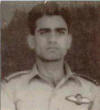
Abdul Karim Bhatti - Tamgha-i-Juraat
On 7th December, 1971, Flight Lieutenant Abdul Karim Bhatti sighted two Hunters during a close support mission. On leader’s instructions he engaged one of the Hunters, pursued it for about 15 miles over enemy territory and finally shot it down. In the process he lost contact with his leader. Flight Lieutenant Bhatti, alone and without any cover, pursued the attack, disregarding his personal safety and achieved a kill. For his devotion to duty and courageous performance, he has been awarded Tamgha-i-Juraat.
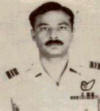
Abdul Wajid Saleem - Sitara-i-Juraat
Flight Lieutenant Abdul Wajid Saleem was the navigator of an aircraft detailed on a mission against an P.A.F. base on the night of 6/7th December, 1971. He planned the mission with great care. During the flight, Flight Lieutenant Abdul Wajid displayed a high degree of professionalism and courage which were a source of inspiration to all other crew members. As the aircraft approached the target it encountered heavy anti-aircraft fire. His accurate tactical navigation ensured a successful mission against heavy odds. In recognition of his devotion to duty and courage, Flight Lieutenant Abdul Wajid Saleem has been awarded Sitara-i-Juraat.
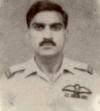
Israr Ahmed - Sitara-i-Juraat
On 4th December, 1971, Flight Lieutenant Israr Ahmad was detailed to fly a mission over the Chamb-Akhnur sector. While over the battle area, his aircraft was hit by enemy ground fire and the pilot was seriously injured. In spite of his injuries, the pilot climbed to height, flew the aircraft and landed at a base during an air raid warning. When he was removed from the cockpit it was found that his right upper arm bone was shattered and he was suffering from serious loss of blood. Flight Lieutenant Israr showed tremendous courage and determination in flying the aircraft back and landing at his base with his left arm in spite of his injuries. In doing this, he displayed sterling qualities of devotion to duty and courage and determination. In recognition of his performance, he has been awarded Sitara-i-Juraat.
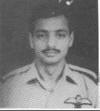
Javed Ahmed - Sitara-i-Juraat
Flight lieutenant Javed Ahmed flew a total of 12 operational missions during the war. He conducted all the missions with courage, skill and in complete disregard of his personal safety.
On 4th December, 1971 Flight Lieutenant Javed was detailed to fly as No.2 on an air defence mission. As he was scrambled for take-off, the airfield was subjected to a surprise attack by two enemy Hunter aircraft. Flight Lieutenant Javed was about to take off when the enemy aircraft spotted the aircraft on the runway and commenced a straffing attack forcing the leader to abort. With total disregard to his personal safety this pilot continued his take-off with the enemy bullets landing just to the left of his aircraft. After successfully getting airborne, Flight Lieutenant Javed intercepted the raiders and shot down one of the Hunters.
In continuing his take-off in the face of grave danger to his life and subsequently shooting down the enemy aircraft Flight Lieutenant Javed has lived upto the true traditions of the P.A.F. For his display of the highest standard of initiatives, courage and professional skill beyond the call of duty, Flight Lieutenant Javed Ahmed has been awarded Sitara-i-Juraat.
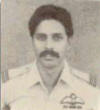
Javed Latif - Tamgha-i-Juraat
During the war, Flight Lieutenant Javed Latif flew twenty operational missions in Air Defence role and displayed professional excellence, cool courage and aggressive spirit of a very high order. Throughout the war, he remained undeterred by hazards posed to his personal safety and undertook tasks assigned to him even though their execution was fraught with many risks. On 4th December, 1971 at 0920 hours he was ordered to scramble for combat air patrol. When he was still in the process of starting up his aircraft, the airfield was attacked by two enemy SU-7s. His aircraft pen received a direct rocket hit but luckily no damage was caused to his aircraft. Under the circumstances he was fully justified to abandon his aircraft and take cover but he decided to continue his mission and successfully destroyed one enemy SU-7 aircraft which attacked the airfield ten minutes later. For his professional excellence, cool courage and a high degree of aggressive spirit when in contact with the enemy, Flight Lieutenant Javed Latif has been awarded Tamgha-i-Juraat.
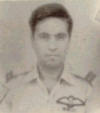
Maqsood Amir - Tamgha-i-Juraat
Flight Lieutenant Maqsood Amir was detailed to carry out a close support mission in an F-86 aircraft on 17th December, 1971. During the mission his formation was engaged by four MIG-21s. Although the F-86 was in a vulnerable position, Flight Lieutenant Maqsood took aggressive evasive action and swiftly maneuvered to gain offensive on the enemy. In the ensuing combat, he handled his aircraft against a much superior adversary in a professional and skilful manner and shot down one of the MIG-21s. The sequence of shooting recorded by his aircraft camera film reflects a very high professional standard. For his courage and high professional skill, he has been awarded Tamgha-i-Juraat.
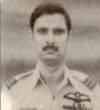
Mir Alam Khan - Sitara-i-Juraat
Flight Lieutenant Mir Alam Khan was detailed on a mission against an I.A.F. base on 6th December, 1971. At the time of his take-off, the airfield came under enemy raid. Undaunted by the danger, he took off during the raid and proceeded on his mission. Despite heavy anti-aircraft fire he successfully completed his mission. During this mission, his aircraft also received a hit from anti-aircraft fire. However, he successfully exited leaving behind his target in flames. The fire was also seen by another friendly aircraft flying thirty miles away. Flight Lieutenant Mir Alam Khan’s action in the execution of his mission bears testimony to his undaunted courage and devotion to duty in keeping with the highest traditions of the service. He has been awarded Sitara-i-Juraat.
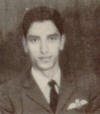
Taloot Mirza - Tamgha-i-Juraat
Flight Lieutenant Taloot Mirza flew a total of fifteen operational missions and was engaged in aerial combat thrice. He demonstrated a high degree of cool courage in both ground attack and aerial combat. On 10th December, 1971,when on a close support mission, his formation of two aircrafts was engaged by six enemy SU-7 aircrafts. Flight Lieutenant Taloot accepted the challenge coolly and successfully destroyed one SU-7 in the face of heavy odds. For his courage and dedication to service he has been awarded Tamgha-i-Juraat.
FLYING OFFICER
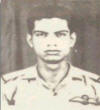
Mohammad Shamsul Haq - Sitara-i-Juraat
During the war Flying Officer Mohammad Shamsul Haq, being the youngest member of the squadron with the least experience of flying, acquitted himself with exemplary courage and skill. On 4th December, 1971 he was ordered to scramble and intercept a formation of four SU-7 aircraft’s attacking Dhaka airfield. As he got airborne, the SU-7s attacked his formation with missiles. He very coolly broke into the attacking aircraft at very low speed and asked his wingman to do the same and in the ensuing battle shot down on SU-7. Meanwhile four Hunters joined the battle. He engaged these Hunters and shot down two of them. There-after he was attacked by 4 MIG-21’s. He put off their attack by quick planning and superior handling of aircraft. Against such heavy odds he displayed exemplary courage and leadership. Flying Officer Shamsul Haq has been awarded Sitara-i-Juraat.
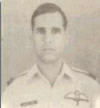
Riffat Jamil - Sitara-i-Juraat
Flying Officer Riffat Jamil flew as a co-pilot on a bombing mission to Jaisalmir on 6th December, 1971. He made a significant contribution to the success of the mission as result of which the enemy suffered heavy losses. In recognition of his courage and determination, he has been awarded Sitara-i-Juraat.
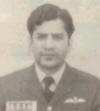
Syed Shamshad Ahmed - Sitara-i-Juraat
On 4th December, 1971 Flying Officer Syed Shamshad Ahmed was scrambled to intercept a formation of four SU-7s attacking Dhaka airfield. As he got airborne he was attacked by the SU-7s with missiles. He put off their attack by superior handling of his aircraft. In the same mission he intercepted a formation of four Hunters. In the subsequent air battle he shot down one Hunter. On another mission he spotted one Hunter attacking our troop positions. Fearlessly he engaged that aircraft and shot it down. Though very young and having very little experience of fighter flying he kept his spirits high and displayed great courage throughout the war. For his courage, skill and performance, Flying Officer Syed Shamshad Ahmed has been awarded Sitara-i-Juraat.
WARRANT OFFICER
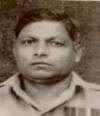
Abdul Haq - Tamgha-i-Juraat
SENIOR TECHNICIAN
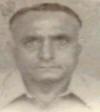
Asghar Ali - Tamgha-i-Juraat
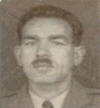
Sajjad Shah - Tamgha-i-Juraat
FLIGHT SEARGENT

Abdul Majid - Tamgha-i-Basalat
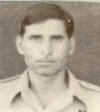
Abdul Rashid - Tamgha-i-Basalat
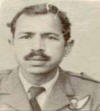
Amir-ud-din - Tamgha-i-Basalat
FLIGHT SEARGENT
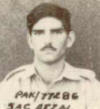
Afzal Abbasi - Tamgha-i-Juraat
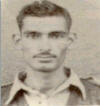
Muhammad Ghazanfar - Tamgha-i-Juraat
JUNIOR TECHNICIAN

Mohammed Latif - Tamgha-i-Juraat
During an enemy air raid, realizing that the pilots strapped in air defence alert aircraft were exposed to grave danger, Junior Technician Muhammad Latif disregarded his personal safety, ran up to each aircraft and helped the pilots to unstrap and take cover. In this process he was fatally wounded by enemy fire and died soon after. For his outstanding courage and devotion to duty, he was awarded the Tamgha-i-Juraat.
